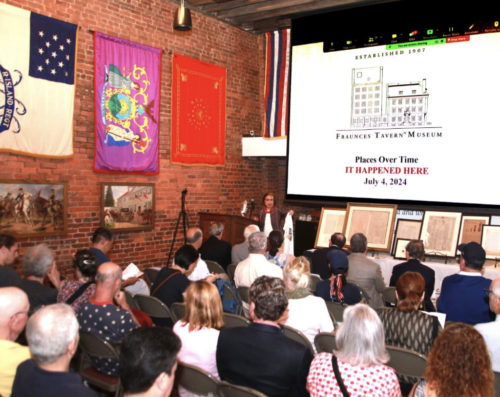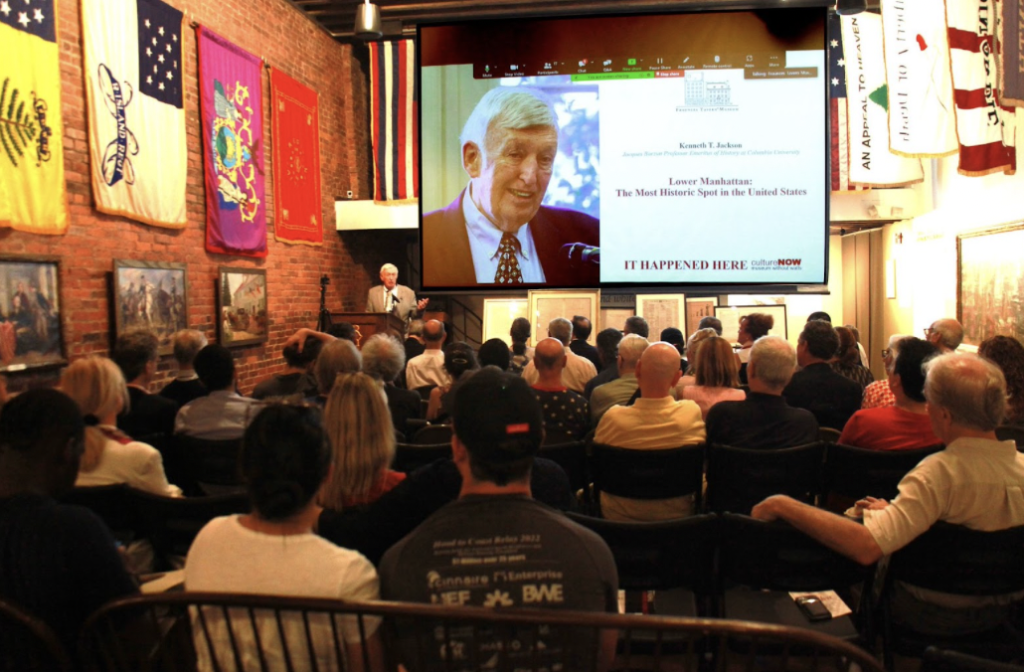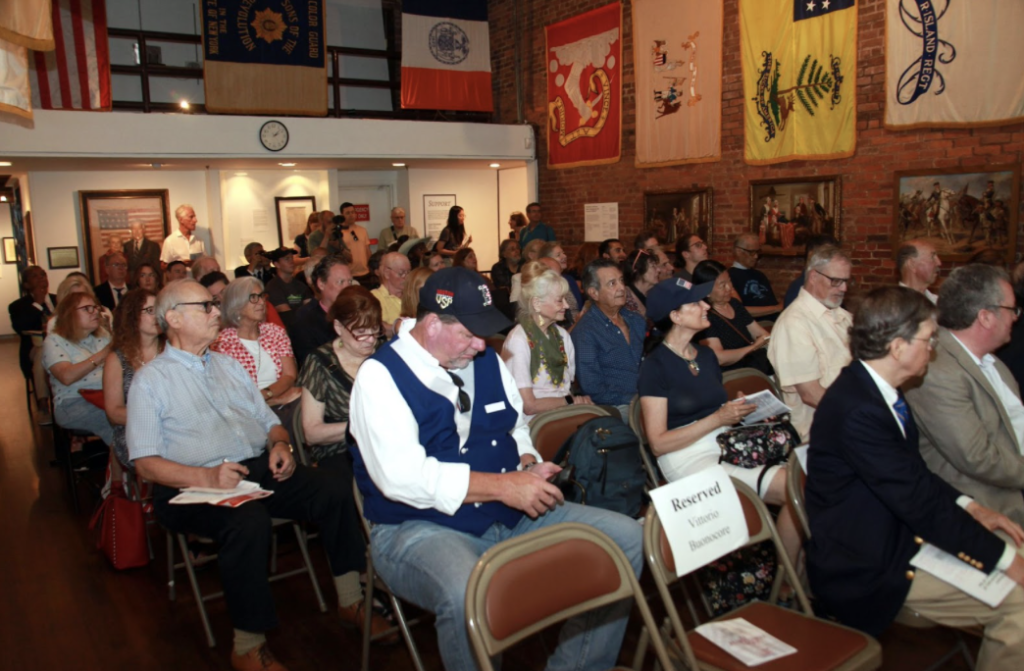Everything has a start. Our nation’s first President, George Washington, did not work out of Washington, D.C., but rather in New York City; not in the White House, but in a “tavern” in lower Manhattan (or some of his administration’s officials did.)
I learned this on July 4th while interning at an “It Happened Here” symposium in the Fraunces Tavern Museum. In her introductory remarks, Ms. Abby Suckle, President of cultureNOW and the event’s organizer, told a packed audience: “Thousands of historical events affecting our city, our nation, and our world all happened here in lower Manhattan.”
400 years ago, a group of Dutch settlers reached what is today Governors Island before moving to lower Manhattan in 1625. They named their settlement New Amsterdam and soon realized that this area “was as natural a location for an urban settlement as there is on this planet,” as Mr. Kenneth T. Jackson, a retired Columbia University history professor, summarized in his keynote speech.
Source: Lower Manhattan Historical Association
As the settlers kept exploring northbound along the western Manhattan shore, they discovered fresh water in the Hudson River. This was a key component for survival and building a thriving community. When the need arose to carry heavy goods such as timber and fur, water transportation was much more convenient. These were the exported items of the Northeast to the southern colonies of America and Europe, all going through the New York harbor. In the reverse direction, cotton from the American South and more settlers from all over the world arrived at the same harbor, before going deeper into the American continent. A sad chapter of these human migrations involved involuntary bondage that no decent society today, or ever, should condone.
In 1674, the British traded a tiny Pacific Ocean island for the Dutch colony of New Amsterdam and renamed it New York. Looking back, compared with the British settlers in the Massachusetts Bay Colony, the Dutch were more tolerant of different religious interpretations of the Bible and each other’s success. Professor Jackson gave an example. If a Dutch vendor were to set up a hot dog stand outside today’s Central Park, he would be willing to sell to anyone regardless of their religion, gender or race. This culture of “diversity, toleration and aspiration” contributed to New York City becoming one of the greatest cities in the world.
In 1762, the Lanceys family sold their private house in lower Manhattan to Samuel Fraunces, who turned the property into a tavern. “New York City residents were objecting to Great Britain’s taxation of the American Colonies, and Fraunces Tavern was a place where both travelers and locals could find like-minded individuals,” Scott Dwyer, the Executive Director of the Fraunces Tavern Museum, informed the symposium audience.
Source: Lower Manhattan Historical Association
In 1776, during the Revolutionary War, the American Patriots were trapped by the British troops in Brooklyn Heights. General George Washington led his army out of this dire situation by crossing the East River into Manhattan in the darkness of the night.
After he was elected the first President of the United States, George Washington took office in Manhattan in 1789. Several federal government agencies worked out of the Fraunces Tavern, including the Department of Foreign Affairs. It was the predecessor to today’s U.S. Department of State, which is the federal government agency that issues passports to citizens.
New York City’s economy continued to grow rapidly during the early days of the young republic. After the New York Stock Exchange’s founding in 1792, the city grew to become the world’s leading financial center as the United States became an international superpower.
What emerged as today’s New York City started as a small European colony on the southern tip of Manhattan. An architect, a retired university professor, and several dedicated people in different professions contributed their voluntary efforts to putting together this highly informative symposium. Their hard work and civic-minded spirit exemplify the best of generations of New Yorkers, and Americans, in the past 400 years.








